Options
Help with British & Spanish Colonials.
First, in case I forget to add this at the bottom: "Thank you for your time."
I need to drain the brains of The Smart Ones again.
I have been given the task of selling these coins and I am trying to do some homework so I do not come off like a numismatic dumb-dumb.
My goals are the following:
(1) To give me a tiny bit more knowledge about each coin.
(2) To confirm the country of origin and denomination.
(3) To - because I have no concept of their value - figure out what lots to put them in should they end up on eBay. Because of the potential listing fees, I would like to have lots of coins in no less than $20 in value.
Any help you can give me would be very much appreciated.
Coin A:
What I think I see: 1731 ? GEORGIVUS ? REX. BRITANNIA. I know it is British. I do not know the denomination. The coin's approx. diameter is 22 mm.
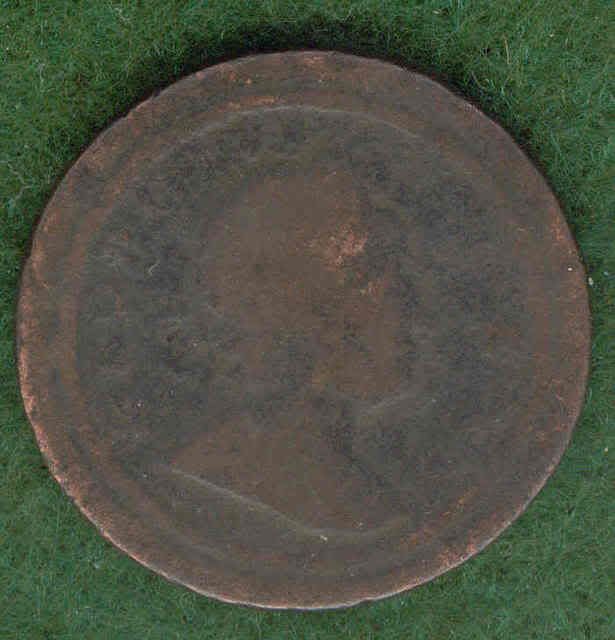
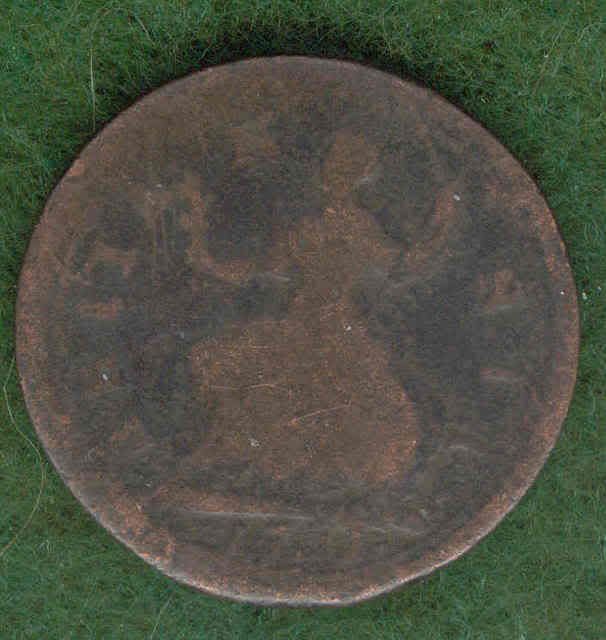
Coin B:
1799 George III copper half penny. ???? diameter: approx. 30.2 mm

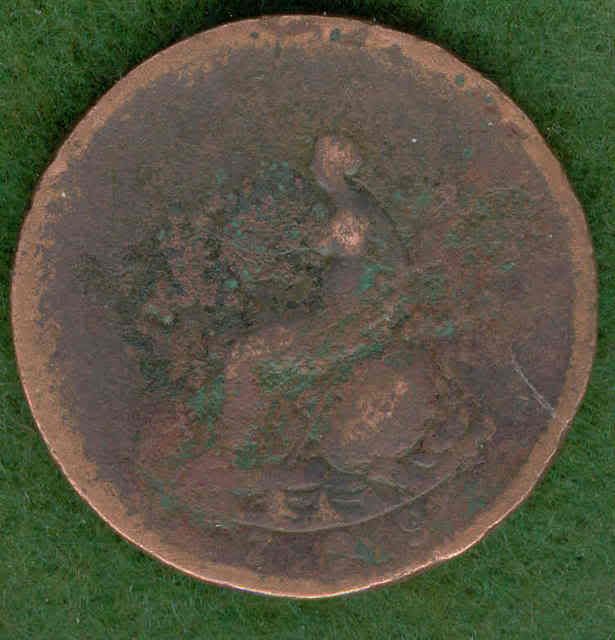
Coin C:
Another British copper. George III. 1770 ??? approx. diameter: 27.2 mm The denomination ?
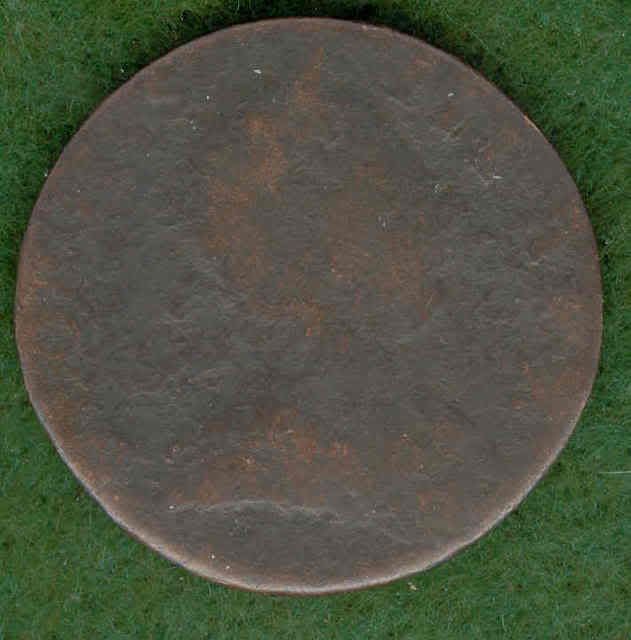
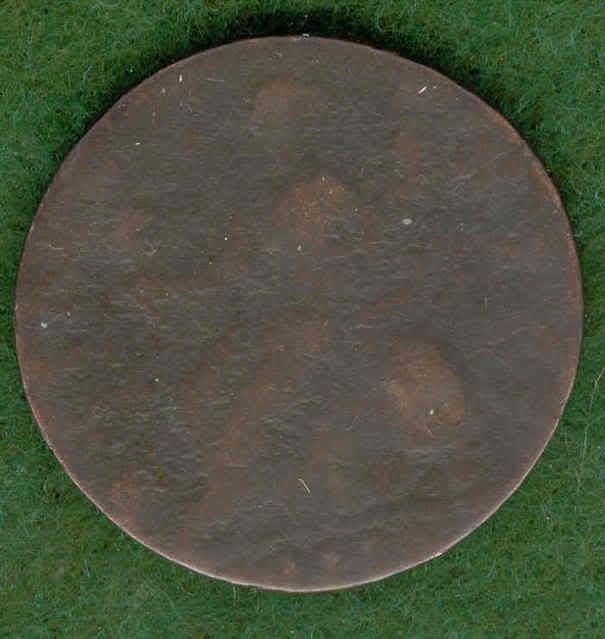
Coin
Another copper half penny? George II 1738 ?? diameter: 27.8 mm
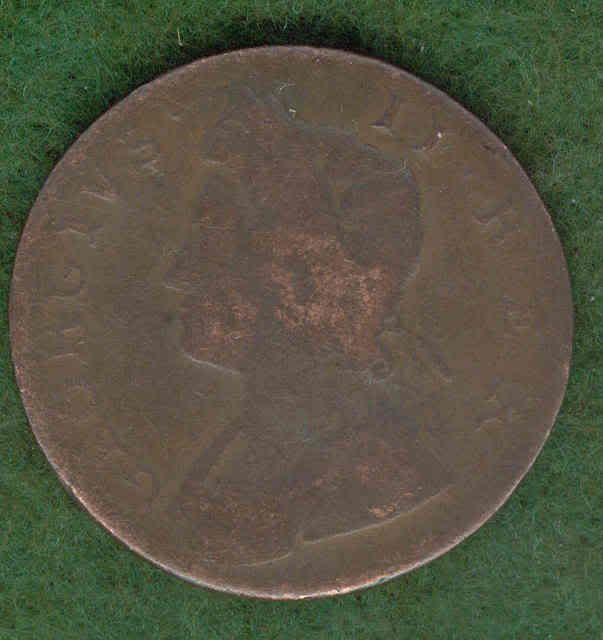
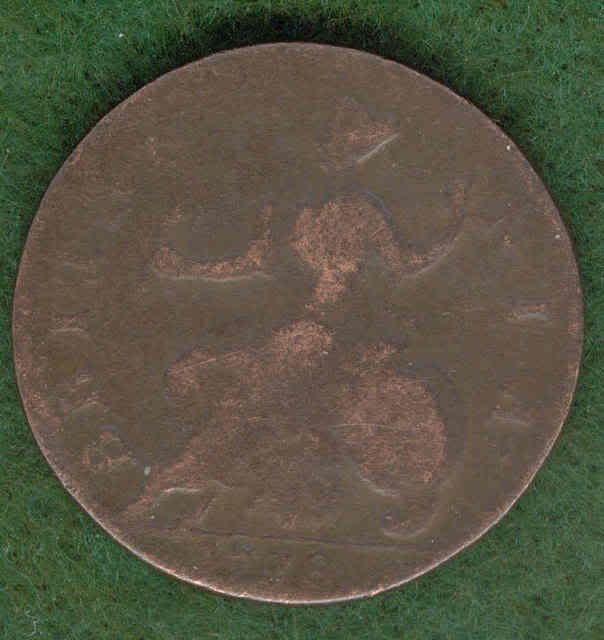
Coin E:
A SILVER COIN. Spanish, I think? What I think I read is PHILIPPUS V D.G. HISPANIA RUM 17?? approx. dia. is 27.5 mm The denomination?
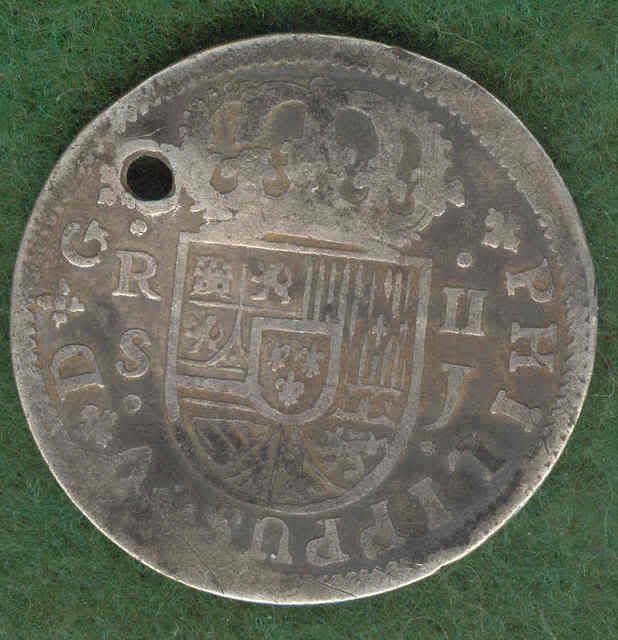
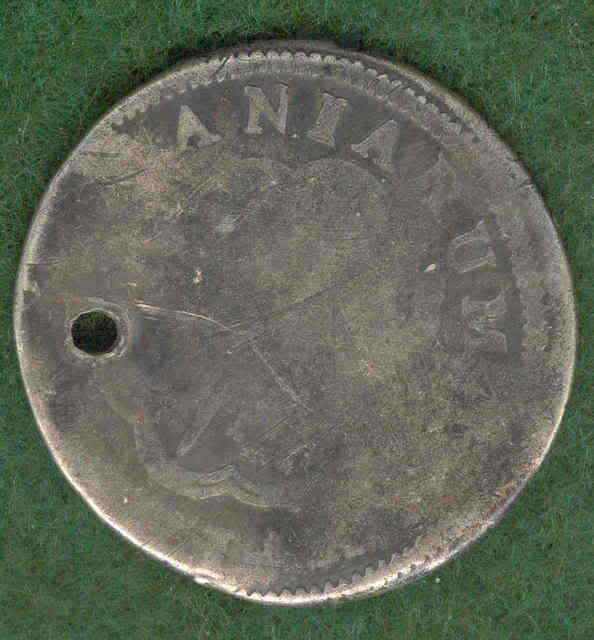
Coin F:
Another Spanish coin? It reads: CAROLUS III D.G. HISP. REX 1774 It is copper. The diameter is approx. 18.2 mm Denomination?
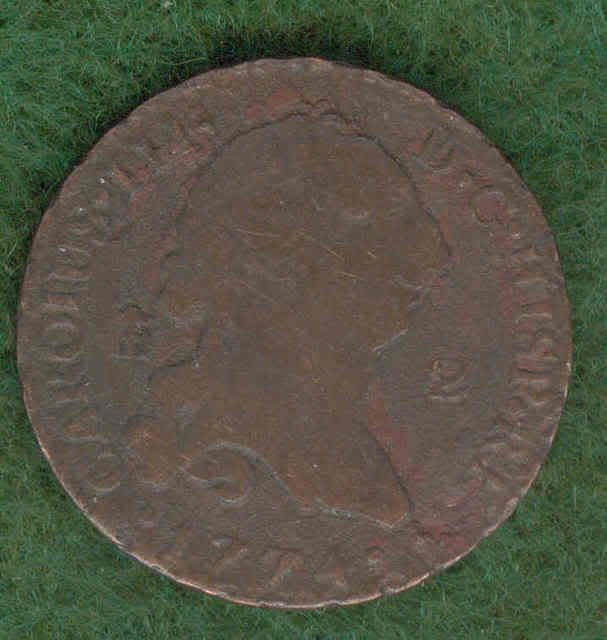
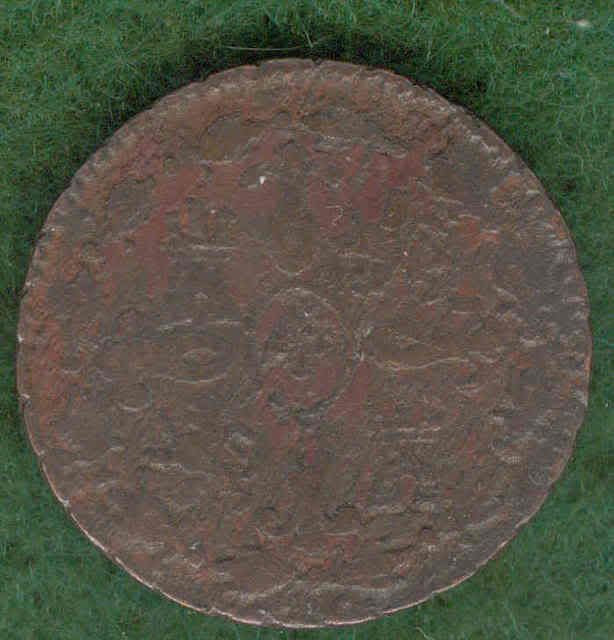
The rest of them:
The rest of them I am going to just put in one lot.
No identification remains on the coins. They are all copper - I believe. The diameters range from 25.5 mm to 35.5 mm
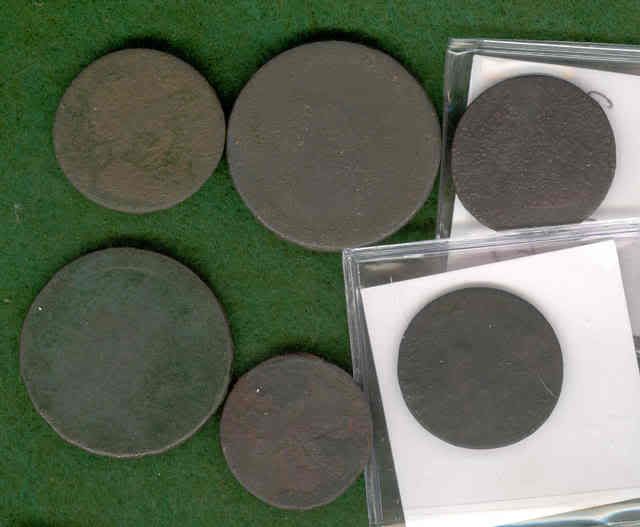
In advance, I thank you for your help.
Regards,
Ed R.
PS: I know this is not the BST board. ...but if anyone has any burning... Well, you know what I am implying. You can PM or e-mail me at edrichter7@msn.com for the fastest response.
I need to drain the brains of The Smart Ones again.
I have been given the task of selling these coins and I am trying to do some homework so I do not come off like a numismatic dumb-dumb.
My goals are the following:
(1) To give me a tiny bit more knowledge about each coin.
(2) To confirm the country of origin and denomination.
(3) To - because I have no concept of their value - figure out what lots to put them in should they end up on eBay. Because of the potential listing fees, I would like to have lots of coins in no less than $20 in value.
Any help you can give me would be very much appreciated.
Coin A:
What I think I see: 1731 ? GEORGIVUS ? REX. BRITANNIA. I know it is British. I do not know the denomination. The coin's approx. diameter is 22 mm.


Coin B:
1799 George III copper half penny. ???? diameter: approx. 30.2 mm


Coin C:
Another British copper. George III. 1770 ??? approx. diameter: 27.2 mm The denomination ?


Coin
Another copper half penny? George II 1738 ?? diameter: 27.8 mm


Coin E:
A SILVER COIN. Spanish, I think? What I think I read is PHILIPPUS V D.G. HISPANIA RUM 17?? approx. dia. is 27.5 mm The denomination?


Coin F:
Another Spanish coin? It reads: CAROLUS III D.G. HISP. REX 1774 It is copper. The diameter is approx. 18.2 mm Denomination?


The rest of them:
The rest of them I am going to just put in one lot.
No identification remains on the coins. They are all copper - I believe. The diameters range from 25.5 mm to 35.5 mm

In advance, I thank you for your help.
Regards,
Ed R.
PS: I know this is not the BST board. ...but if anyone has any burning... Well, you know what I am implying. You can PM or e-mail me at edrichter7@msn.com for the fastest response.
0
Comments
However, here's the bad news, all these coins aren't worth much because of the poor condition. The best coins of the group would have been the 1721, 1738, and the pistareen. The 1797, 1799 and Spanish copper aren't really even considered Colonial coins.
At best, I'd say you might get around $25 for the entire lot.
Half penny and farthing coins were minted in 1799 in response to the great shortage of small value currency, the same shortage that lead to the use of tokens in the late 1780's - late 1790's, a series now referred to as "Conder tokens" in the US.
Collecting:
Conder tokens
19th & 20th Century coins from Great Britain and the Realm
E is a 2 Reales piece.
? for the others.
Life member #369 of the Royal Canadian Numismatic Association
Member of Canadian Association of Token Collectors
Collector of:
Canadian coins and pre-confederation tokens
Darkside proof/mint sets dated 1960
My Ebay
Make sure you list in the US Colonial section as well as the World Coins Collections & Lots category (or if you choose only one category, go US Colonial, since such material as this qualifies, as it circulated in the American colonies).
PS- I do buy such lots if they're inexpensive. I like old stuff, regardless of the grade. I'm a bit of a "bottom feeder" at times, siphoning up a fair portion of the junk out there, as there's a ready market for it at my antique mall booth. So I would spare you the hassle of eBay and take the lot off your hands, but to be candid, you'd probably get best buck for 'em if you toss 'em in the Bay. (The Bay of E, that is).
(edited to fix small grammatical error)
I now have a clear idea of how I will be selling these coins.
My next issue(s) I will have to deal with myself:
My friend (the owner of these coins) has an economic need to sell his coins. These coins are tiny part of a large collection that has almost been already completely dispersed. (Only approx. 5 to 10% of his coins made it to eBay. I rest I sold through other venues or direct to buyers. The current coins I have on eBay - seller name: edmerlr - are his. ...as were all of the other coins I sold on eBay in 2008. A quick search of my eBay feedback would show the eclectic scope of his collection.)
Obviously for coins like this, eBay is the perhaps the best approach for exposure to the greatest potential number of buyers.
Historically my friend and I were and have always been what you would call "Bottom Feeders" or "Sniper Bidders Extraordinare." For this reason we both have an aversion to starting lots on eBay at 99 cents. (Isn't it interesting that as human beings we don't like things done to us [by Bottom Feeding Sniper Bidders], but we do not usually hesitate doing it to others?)
I will spent the next couple of hours deciding which way to go with these coins - while I am scanning other coins from this collection. I like Lord Marcovan's suggestions. Thank you, Lord M.
I find it amazing that coins like this - regardless of their (bad) condition - over 200 years old sell for so little in comparison to some of the Modern Coins that were struck in the millions and millions. Perhaps the Collector Base for these old coins is very small?
One Gentleman has expressed interest in the silver coin. I will be PMing him shortly to try to figure what is best for all.
...again thank you all for your time.
...and thank you for reading.
Regards,
Ed R.
<< <i>
I find it amazing that coins like this - regardless of their (bad) condition - over 200 years old sell for so little in comparison to some of the Modern Coins that were struck in the millions and millions. Perhaps the Collector Base for these old coins is very small?
Regards,
Ed R. >>
Compared to many US coins, older and modern, the collector base for these coins is a lot smaller. But you have the same misconception that many have - that a coin's age has anything to do with its value. Some of the cheapest coins available are the oldest. Now that is not true in every case of course, but as a general rule it is true.
And many of these older coin that you have pictured were made in the millions, just like modern coins. And very nice examples of them still exist, which also partly explains why examples like these in poor condition are worth so little.
But you're right--their history value FAR outweighs their current market value. Even though every one of these coins was known to circulate in Colonial America and/or the early United States, to most collectors they are still viewed as just old darkside coins.i